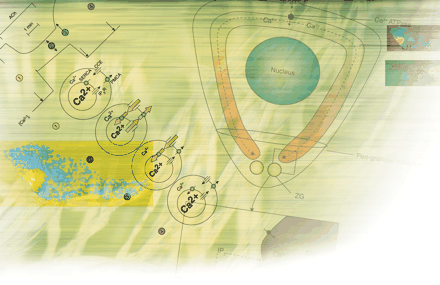Twenty Years of Calcium Imaging: Cell Physiology to Dye For
- Harm J. Knot1,
- Ismail Laher2,
- Eric A. Sobie3,
- Silvia Guatimosim3,
- Leticia Gomez-Viquez3,
- Hali Hartmann3,
- Long-Sheng Song3,
- W.J. Lederer3,
- Wolfgang F. Graier4,
- Roland Malli4,
- Maud Frieden5 and
- Ole H. Petersen6
- 1Department of Pharmacology & Therapeutics and Division of Cardiology College of Medicine, University of Florida, Gainesville, FL
- 2Department of Pharmacology and Therepeutics, University of British Columbia, Vancouver, BC
- 3Medical Biotechnology Center, University of Maryland Biotechnology Institute, Baltimore, MD
- 4Institue of Molecular Biology & Biochemistry, Medical University of Graz, Austria
- 5Department of Cell Physiology and Metabolism, University of Geneva Medical Center, Geneva, Switzerland
- 6The Physiological Laboratory, University of Liverpool, Liverpool, UK
Abstract
The use of fluorescent dyes over the past two decades has led to a revolution in our understanding of calcium signaling. Given the ubiquitous role of Ca2+ in signal transduction at the most fundamental levels of molecular, cellular, and organismal biology, it has been challenging to understand how the specificity and versatility of Ca2+ signaling is accomplished. In excitable cells, the coordination of changing Ca2+ concentrations at global (cellular) and well-defined subcellular spaces through the course of membrane depolarization can now be conceptualized in the context of disease processes such as cardiac arrhythmogenesis. The spatial and temporal dimensions of Ca2+ signaling are similarly important in non-excitable cells, such as endothelial and epithelial cells, to regulate multiple signaling pathways that participate in organ homeostasis as well as cellular organization and essential secretory processes.

- © American Society for Pharmacology and Experimental Theraputics 2005



